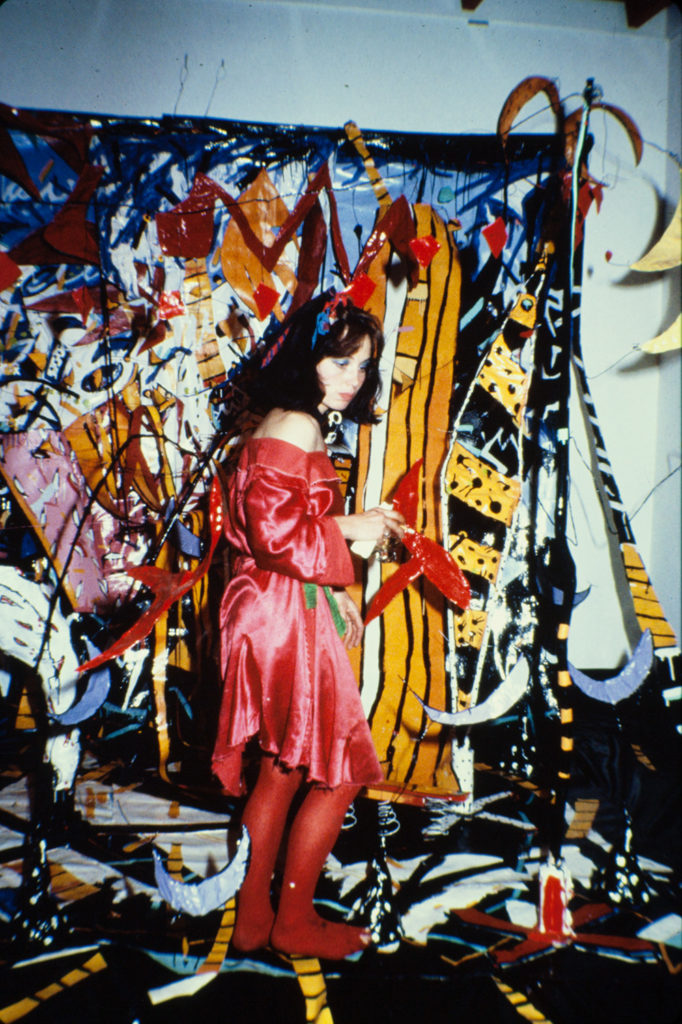Roll up, roll up ... Two masks stand on either side of the black curtains. Viewers remove their shoes and walk barefoot across the soft spongey plastic floor. Glossy polythene sheets divide the downstairs gallery into seven sculptural environments. Each is filled with smaller works made of sticks, wire, masking tape, particle board, polythene sheeting, papier mache, plaster, and enamel. An Ilam graduate, twenty-five-year-old Debra Bustin describes herself as specialising in 'environmental sculpture, walk-in sculpture projects, video, and screenprinting'.
Natural motifs, like trees, are given a zany fantastical spin. Rope-like skeins of painted forms reach out from slashed canvases and painted wires protrude creating 3-D drawings. Tiny motors automate elements of the installation.
A large mobile on loan from the Govett-Brewster Art Gallery is exhibited at the end of a long black-floored corridor-like space. Bustin refers to it as a 'deconstructed painting.' 'I was having a great time exploding paintings', she says.
A drum machine plays a 'tree' sculpture in a white room. Small landscape works depicting night and day adorn the walls, as though peeling from them.
The centrepiece is a large striped tent. On opening night, musicians played inside it, and now their costumes now hang from the walls, which are decorated with musical notes and floating commas. Hat or wig stands are included alongside a podium and music stand.
In the Dominion Post, Elva Best calls the show, 'A Dr Seuss-like world of the unexpected and the undecipherable'. The Evening Post also raves, comparing Bustin's 'opulent phantasmagoria' to Alexander Calder's mobiles, Paul Klee's 'twittering machine', and Ashille Gorky's vocabulary of 'flower stamens, claws, feathers, sexual organs'.





































































